Hydrogen Mobility Europe (H2ME): Vehicle and Hydrogen Refuelling Station Deployment Results
Abstract
:1. Introduction
- Demonstration programmes funded by the European Fuel Cells and Hydrogen Joint Undertaking (FCH JU) (e.g., HyTEC, HyFIVE).
- National initiatives undertaken in several countries (e.g., H2 Mobility Deutschland, UK H2 Mobility, Mobilité Hydrogène France, and Japan H2 Mobility).
Hydrogen Mobility Europe (H2ME)
- H2ME-1 (2015–2020), which aims to deploy 300 FCEVs and fuel cell range-extended electric vehicles (FC REEVs) and 29 HRS.
- H2ME-2 (2016–2022), which aims to deploy 1200 FCEVs and FC REEVs and 20 HRS (hydrogen refuelling stations).
2. Results—Vehicles
2.1. Vehicle Types Used in H2ME
2.2. How H2ME Vehicles Are Being Used and Refuelled
2.2.1. Fuel Cell Electric Passenger Vehicles (FCEVs)
2.2.2. Fuel Cell Range Extended Electric Vans (FC-REEVs)
2.3. Vehicle Energy Usage
2.3.1. Fuel Cell Electric Passenger Vehicles (FCEVs)
- reduced battery and mechanical efficiency
- greater use of on board cabin heating during winter
- increased rolling and wind resistance.
2.3.2. Fuel Cell Range Extended Electric Vans (FC-REEVs)
- H2 conversion via the FC to electricity is 45% efficient (Value Provided by Symbio FCell).
- The efficiency of energy transfer from the battery to the wheels is 90%
3. Results—Hydrogen Refuelling Stations (HRS)
3.1. Station Usage
3.2. Station Vehicle Refuelling Time
3.3. Station Availability
4. Conclusions
- FCEVs are used in the same way as conventional vehicles regarding daily usage patterns, and their rapid refuelling rate and long range allow them to travel distances of over 500 km in a single day.
- FC-REEV vehicles have demonstrated that they can fulfil the work-related needs of utility van drivers, whether fuelled primarily by hydrogen or electricity, travelling up to 300 km per day.
- The Kolding HRS dispensed 900 kg of hydrogen in a year and displayed excellent reliability (98.2% availability).
- The technology is safe, and there were no vehicle or HRS safety incidents reported during this period.
Funding
Acknowledgments
Conflicts of Interest
References
- The European Strategic Energy Plan (SET). Available online: https://publications.europa.eu/en/publication-detail/-/publication/771918e8-d3ee-11e7-a5b9-01aa75ed71a1/language-en/format-PDF (accessed on 23 June 2017).
- Roadmap to a Single European Transport Area—Towards a Competitive and Resource Efficient Transport System COM; 144 Final, 28/3/2011; European Commission: Brussels, Belgium, 2011.
- FCH 2 JU Multi-Annual Work Plan 2014–2020. Available online: http://www.fch.europa.eu/sites/default/files/documents/FCH2%20JU%20-%20Multi%20Annual%20Work%20Plan%20-%20MAWP_en_0.pdf (accessed on 23 June 2017).
- Hydrogen Mobility Europe (H2ME): Vehicle and Hydrogen Refuelling Station Deployment Results. In Proceedings of the EVS30 Symposium, Stuttgart, Germany, 9–11 October 2017.
- Mobilität in Deutschland (2008 National Travel Survey). Available online: http://www.mobilitaet-in-deutschland.de/mid2008-publikationen.html (accessed on 23 June 2017).
- Motor Vehicle Use and Travel Behaviour in Germany—Determinants of Car Mileage, Dominika Kalinowska Hartmut Kuhfeld. Available online: http://www.diw.de/documents/publikationen/73/diw_01.c.44461.de/dp602.pdf (accessed on 23 June 2017).
- NREL Fuel Cell and Hydrogen Technology Validation Composite Data Products. Available online: http://www.nrel.gov/hydrogen/images/cdp_fcev_54.jpg (accessed on 23 June 2017).
- Ultra Low Emission Vans Study, Element Energy. 2012. Available online: https://www.gov.uk/government/uploads/system/uploads/attachment_data/file/4550/ultra-low-emission-vans-study.pdf (accessed on 23 June 2017).
- Temperature Data. Available online: http://www.wunderground.com (accessed on 23 June 2017).
- Further Discussion. Available online: https://www.fueleconomy.gov/feg/coldweather.shtml (accessed on 23 June 2017).
- HyTEC Final Report on Three Years of Hydrogen Vehicle and Refuelling Station Operation in Copenhagen, London and Oslo, P Speers, Cenex. Available online: http://www.fch.europa.eu/sites/default/files/project_results_and_deliverables/Final%20technical%20report.pdf (accessed on 23 June 2017).
- Fueling Protocols for Light Duty and Medium Duty Gaseous Hydrogen Surface Vehicles. Available online: http://standards.sae.org/j2601_201612/ (accessed on 23 June 2017).
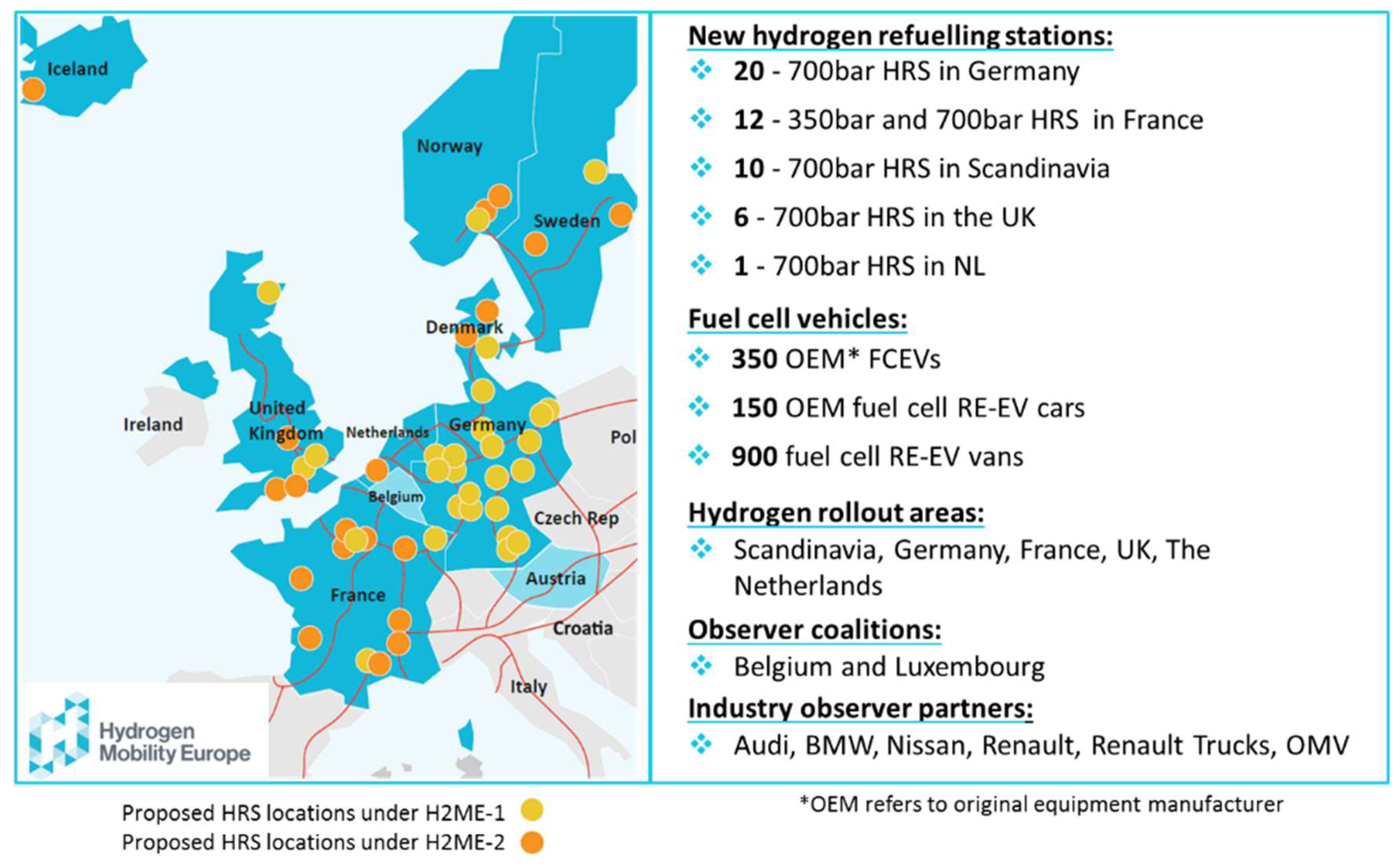
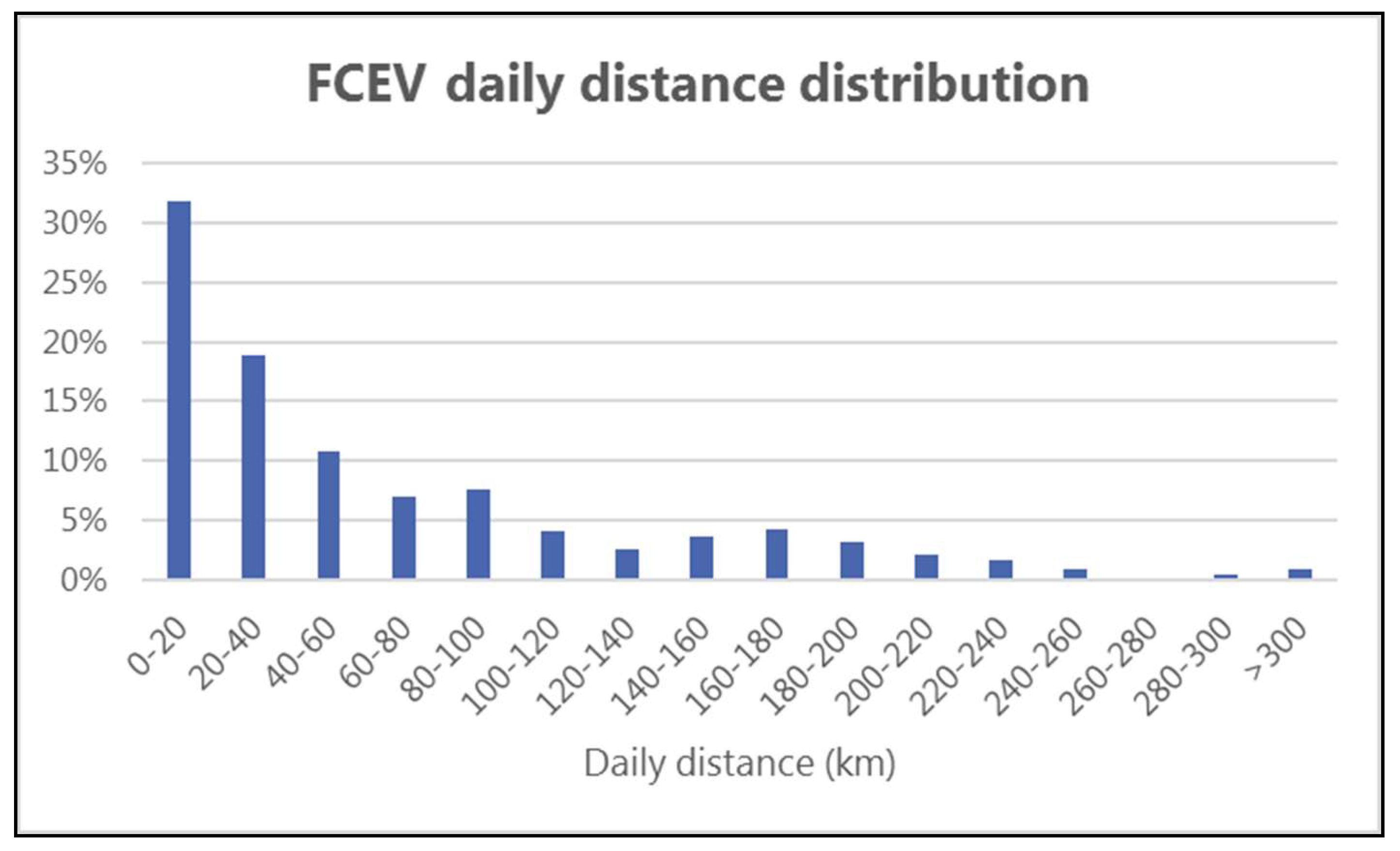
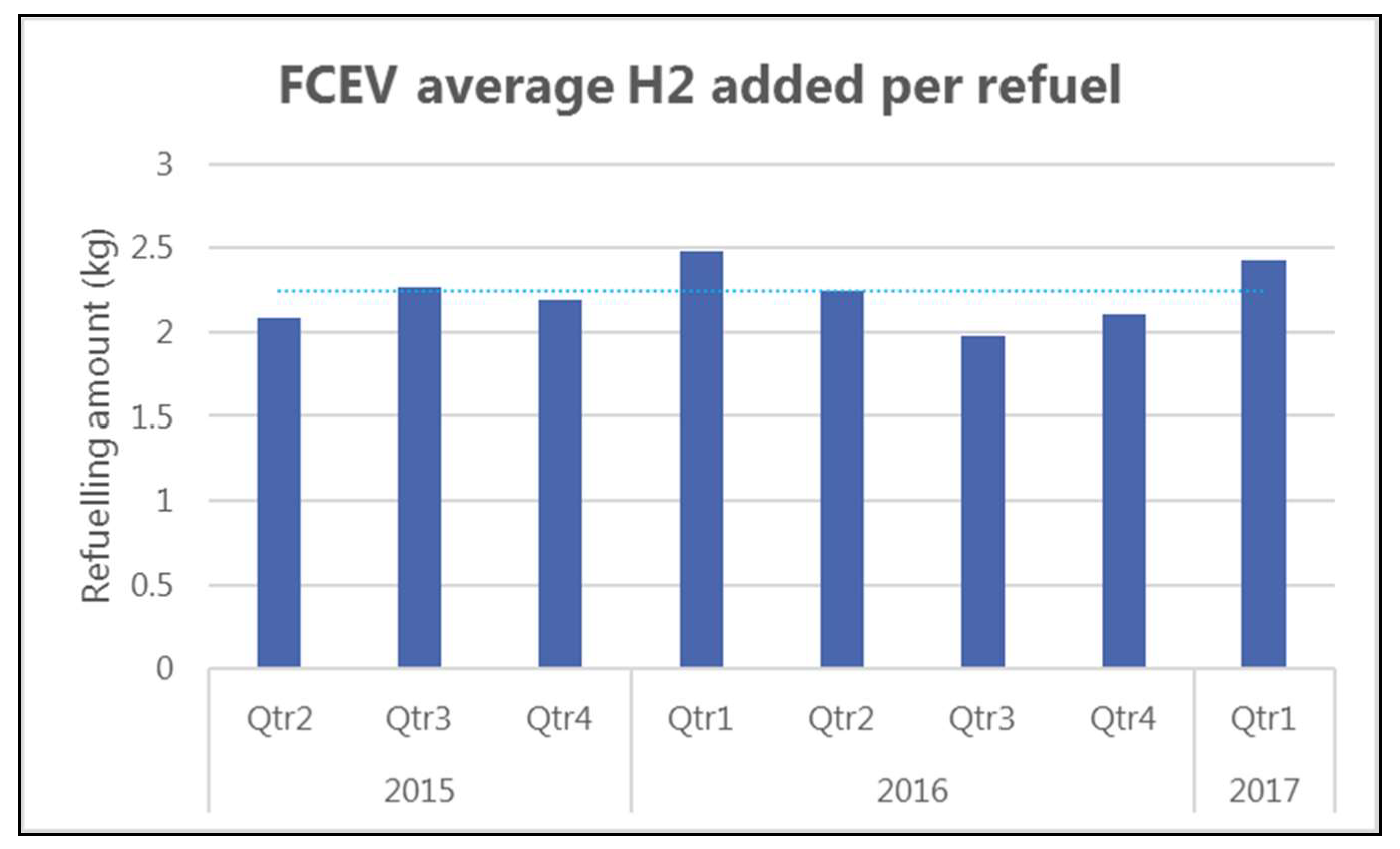
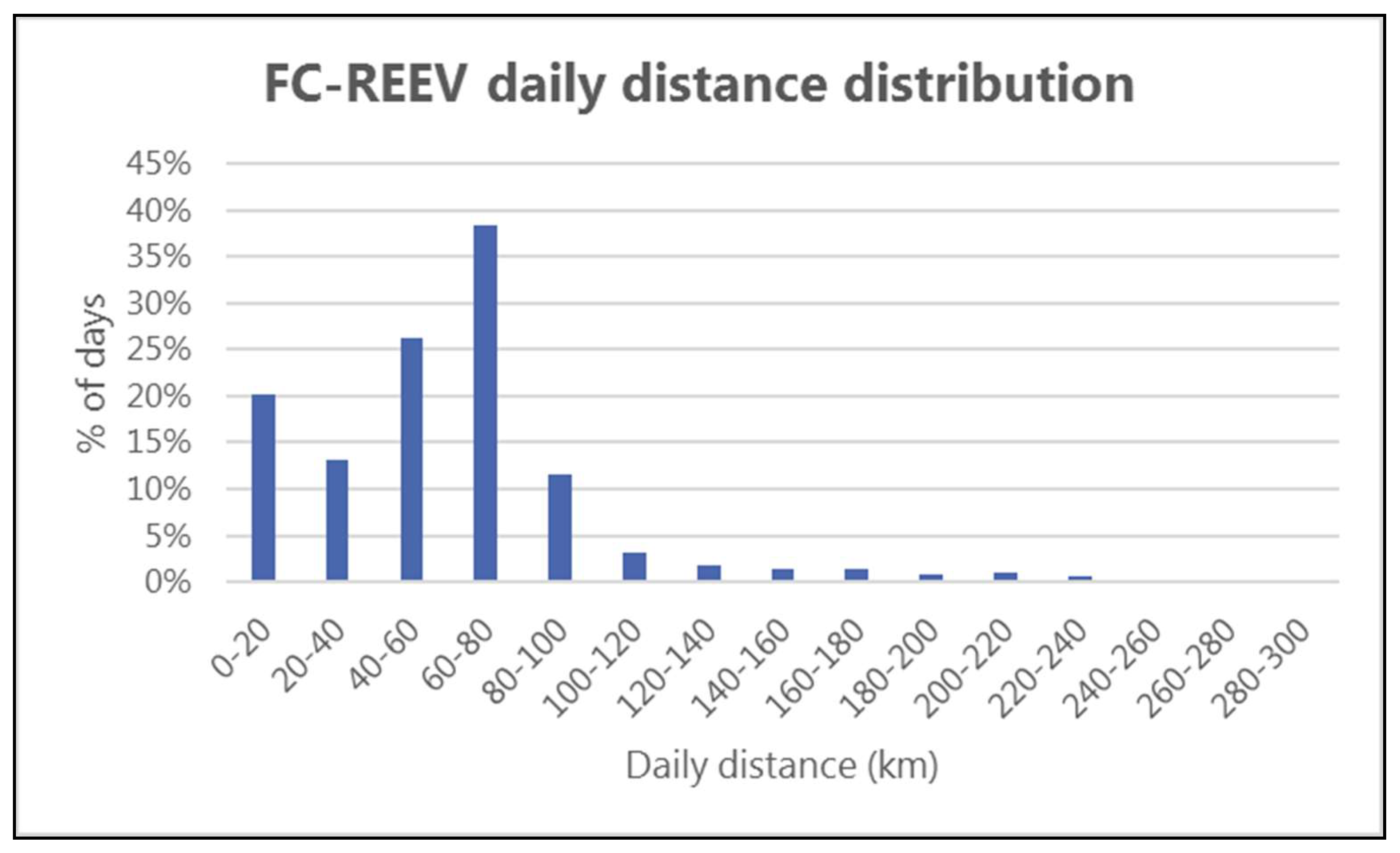
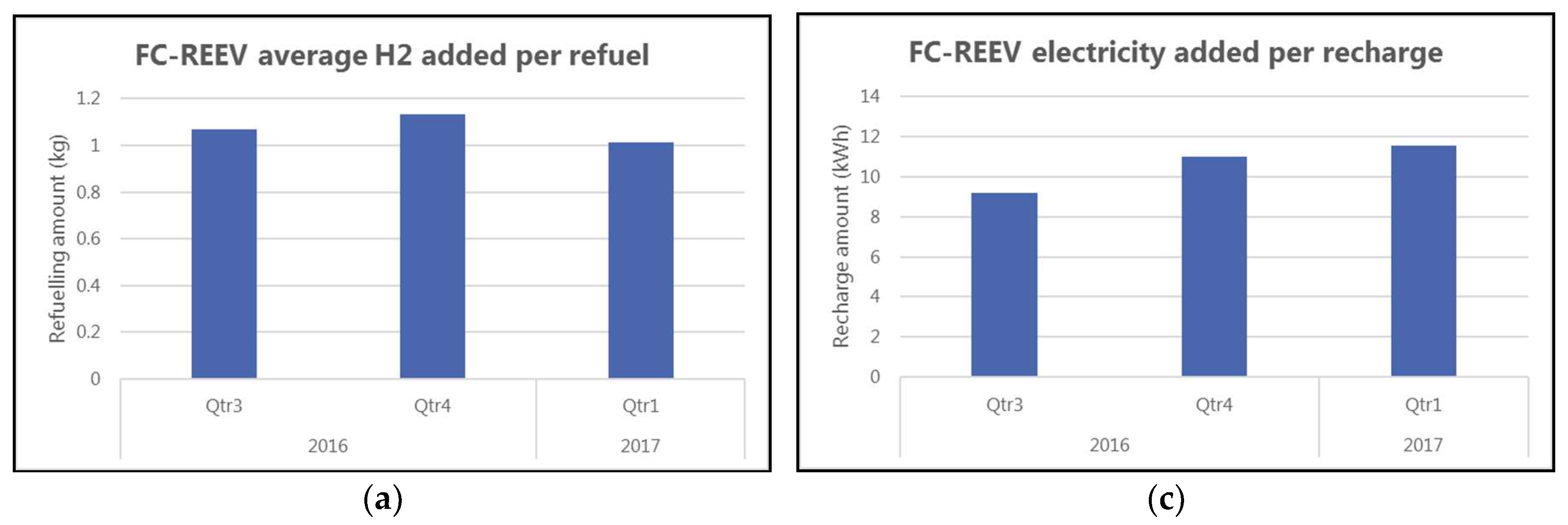
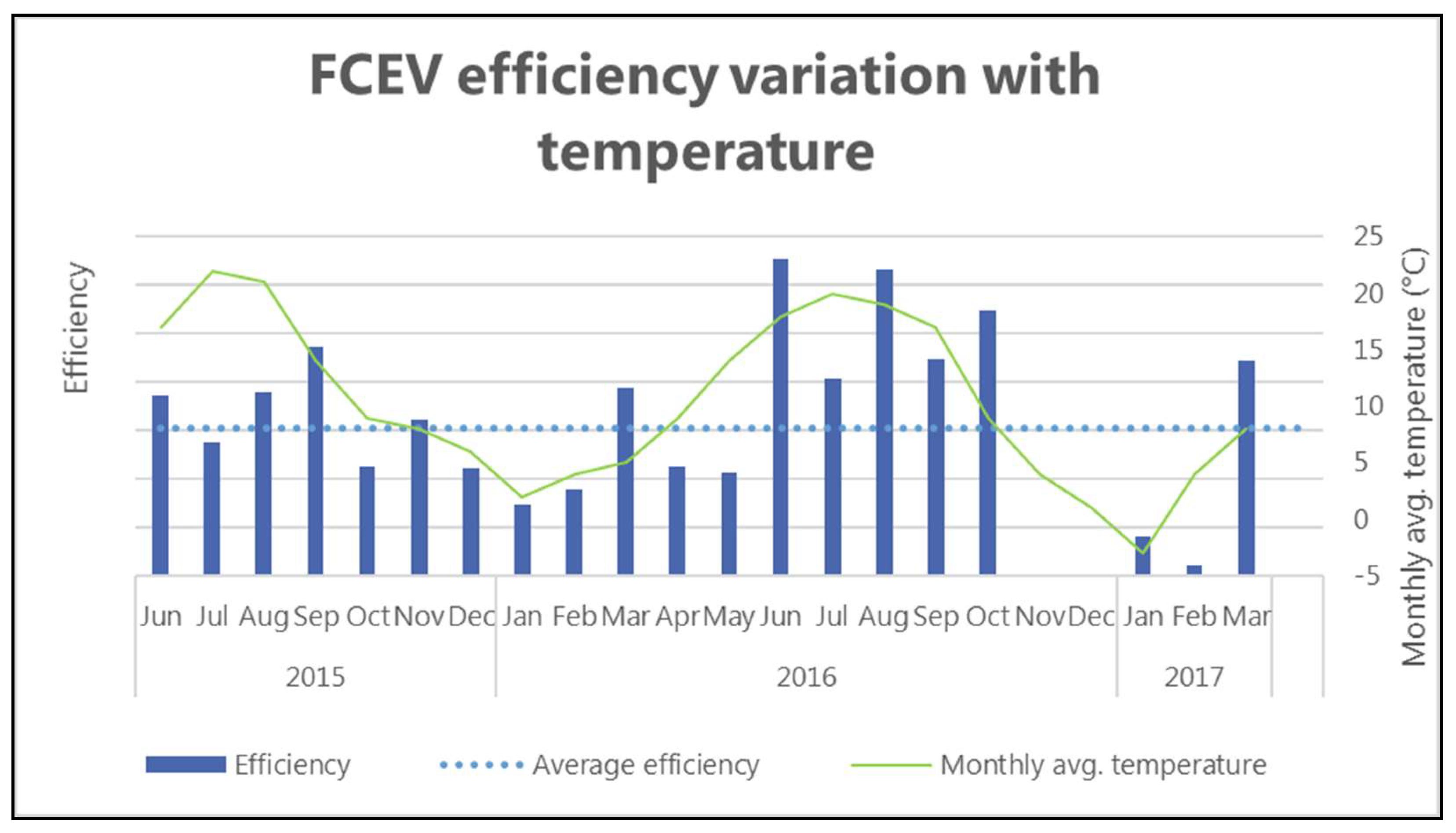

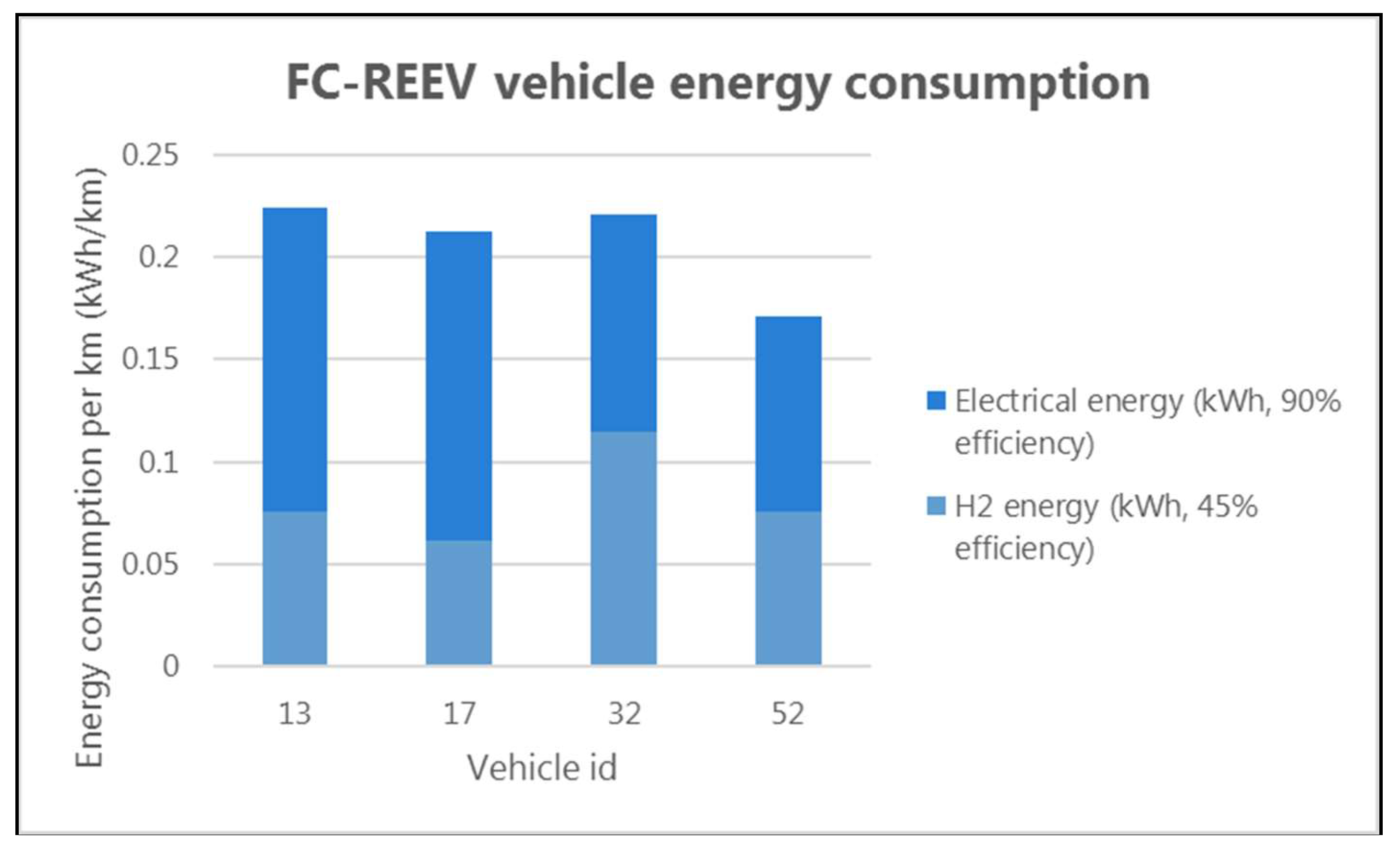
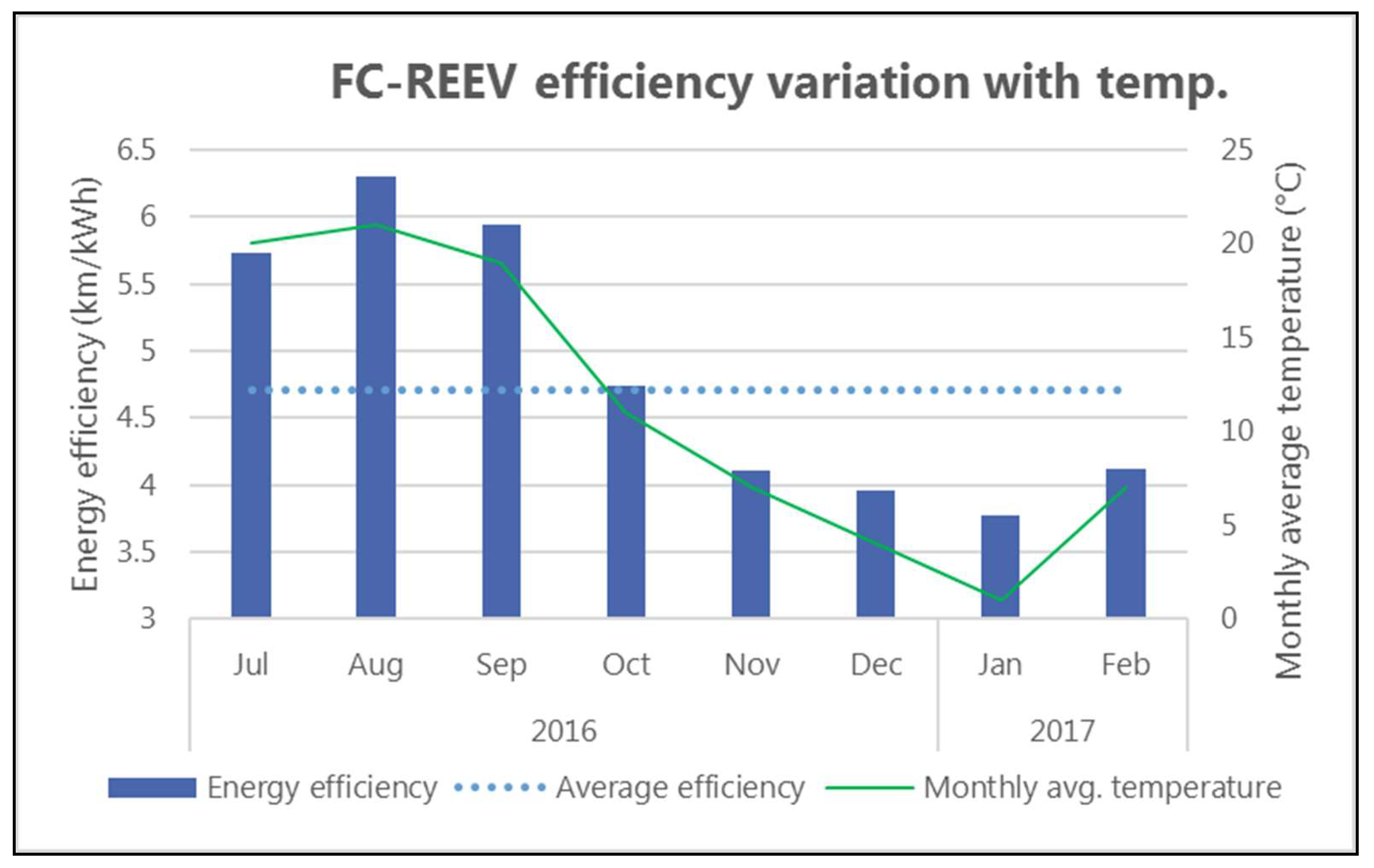
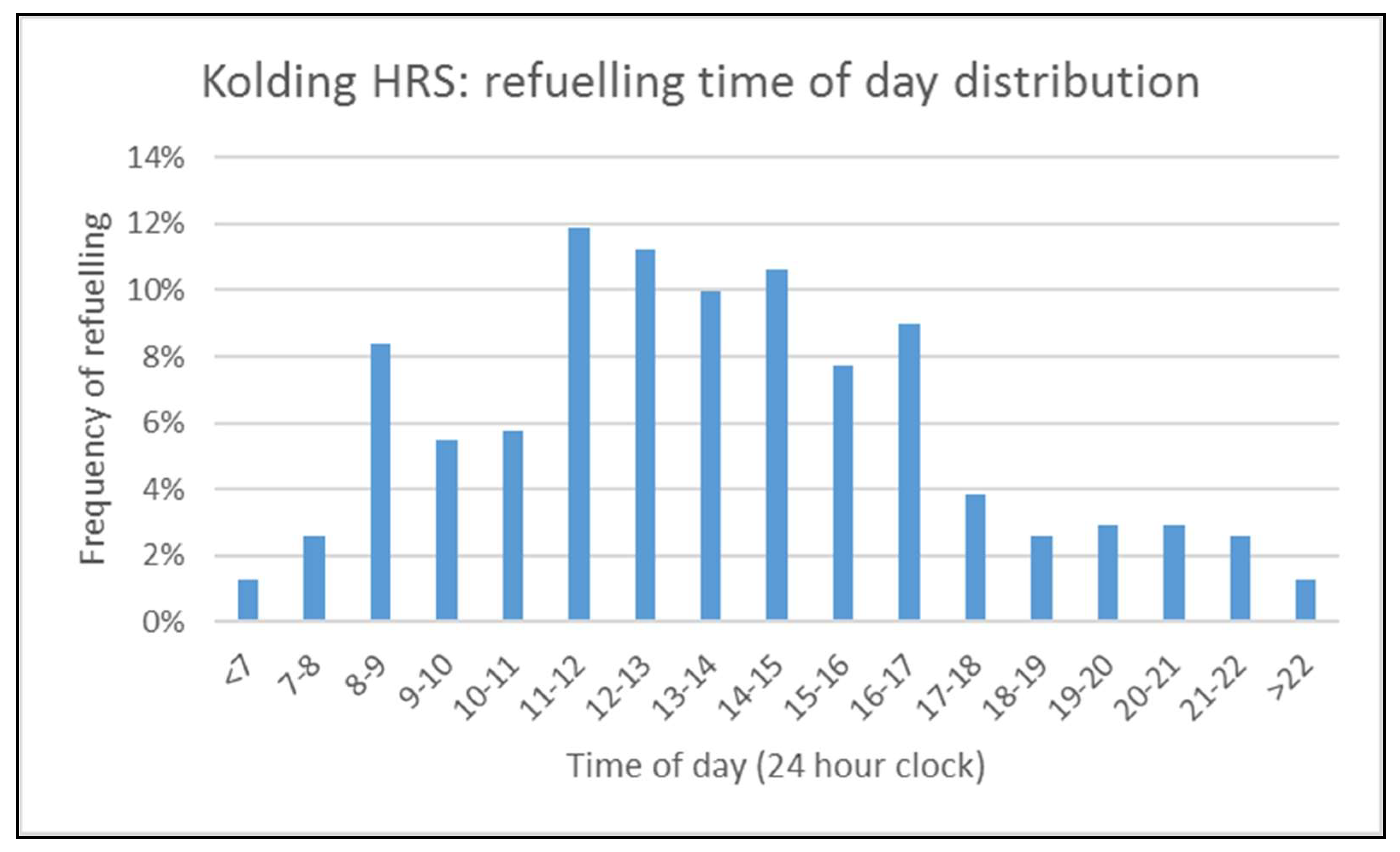
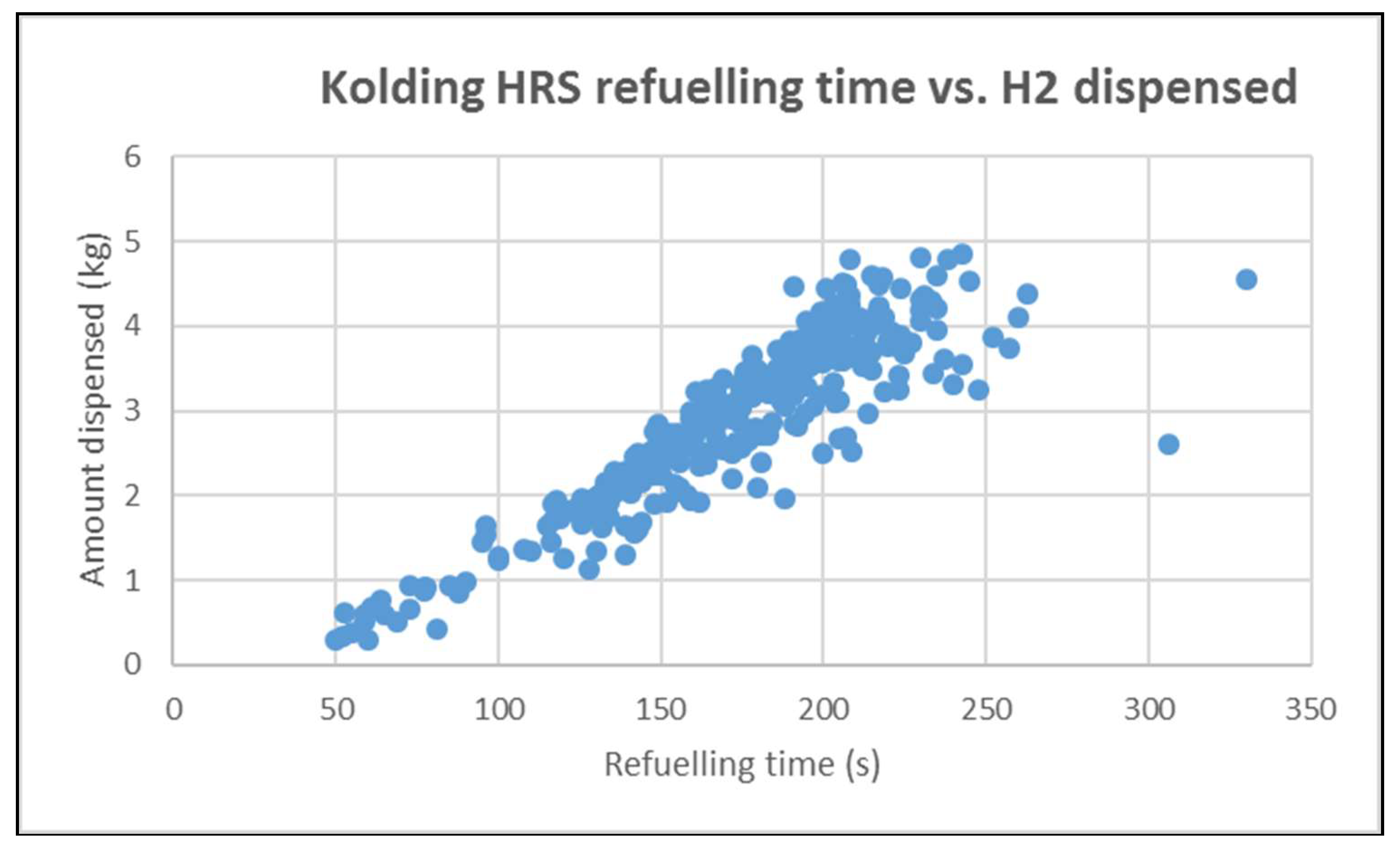
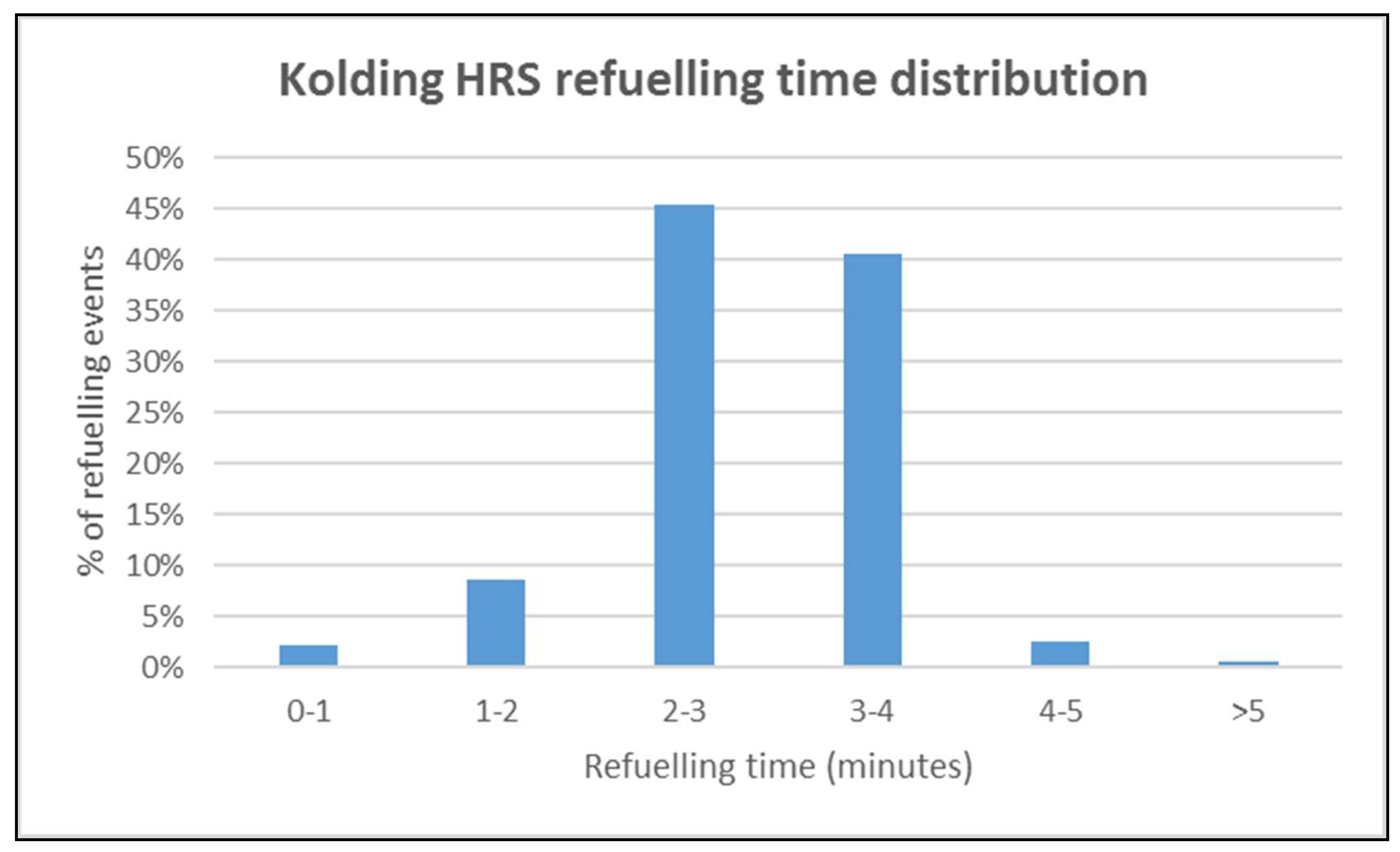
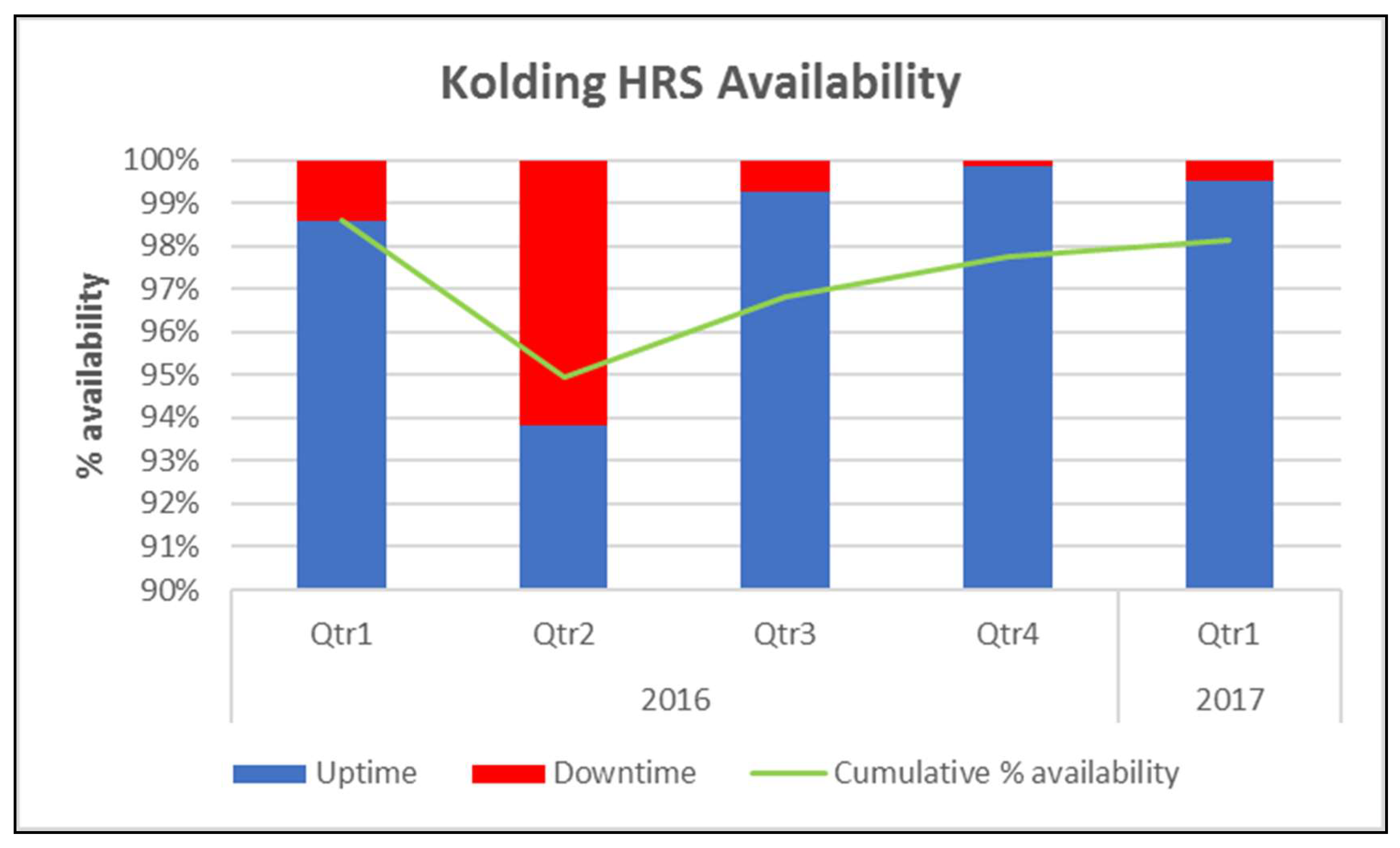
| Parameter | Daimler B-Class F-Cell FCEV | Symbio Kangoo ZE H2 FC REEV |
|---|---|---|
| Vehicle architecture | Battery/fuel cell parallel hybrid | Battery electric Renault Z.E. with a fuel cell range extender |
| Range (km, New European Drive Cycle, NEDC) | 380 | 300 |
| Stack Continuous Power Rating (kW) | 70 | 5 |
| Tank Capacity (kg H2) | 3.7 | 1.8 |
| Tank Pressure (bar) | 700 | 350 |
| Battery Pack Size | 1.4 kWh Li Ion | 22 kWh Li Ion |
| Number deployed | 40 (in Germany) | 62 (in France and the United Kingdom) |
| Distance driven (km) | 542,330 | 83,000 |
| Parameter | Value |
|---|---|
| Station supplier | NEL Hydrogen Fueling |
| Accessibility | Public 24/7 |
| Hydrogen dispensing pressure (bar) | 700 |
| Hydrogen supply | Offsite |
| Capacity | 100 kg/day |
| Back-to-back capacity | 2.5 vehicles |
| Hydrogen dispensed | 900 kg |
| Availability | 98.2% |
© 2018 by the author. Licensee MDPI, Basel, Switzerland. This article is an open access article distributed under the terms and conditions of the Creative Commons Attribution (CC BY) license (http://creativecommons.org/licenses/by/4.0/).
Share and Cite
Speers, P. Hydrogen Mobility Europe (H2ME): Vehicle and Hydrogen Refuelling Station Deployment Results. World Electr. Veh. J. 2018, 9, 2. https://doi.org/10.3390/wevj9010002
Speers P. Hydrogen Mobility Europe (H2ME): Vehicle and Hydrogen Refuelling Station Deployment Results. World Electric Vehicle Journal. 2018; 9(1):2. https://doi.org/10.3390/wevj9010002
Chicago/Turabian StyleSpeers, Peter. 2018. "Hydrogen Mobility Europe (H2ME): Vehicle and Hydrogen Refuelling Station Deployment Results" World Electric Vehicle Journal 9, no. 1: 2. https://doi.org/10.3390/wevj9010002
APA StyleSpeers, P. (2018). Hydrogen Mobility Europe (H2ME): Vehicle and Hydrogen Refuelling Station Deployment Results. World Electric Vehicle Journal, 9(1), 2. https://doi.org/10.3390/wevj9010002




